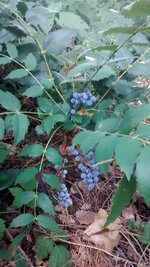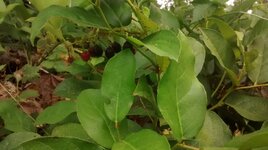Silver Lifetime
- Messages
- 42,701
- Reactions
- 110,879
Here are a few that I found and recognized on my property.
Oregon grape. Not ripe yet (I think). I don't have very much of this, but I am thinking of planting some along the road because it is evergreen and the leaves are like holly so they are something of a barrier that people won't want to walk through.

Oregon grape. Not ripe yet (I think). I don't have very much of this, but I am thinking of planting some along the road because it is evergreen and the leaves are like holly so they are something of a barrier that people won't want to walk through.










 Pine Needles can make Tea
Pine Needles can make Tea as well and tastes pretty good. The ''Manzanita'' Tree means Little Apples in Spanish for the little red Berries it produces and I am not sure if the Berries are edible or not.
as well and tastes pretty good. The ''Manzanita'' Tree means Little Apples in Spanish for the little red Berries it produces and I am not sure if the Berries are edible or not.  My favorite meat is Rattlesnake and there are plenty of those around.
My favorite meat is Rattlesnake and there are plenty of those around. 







